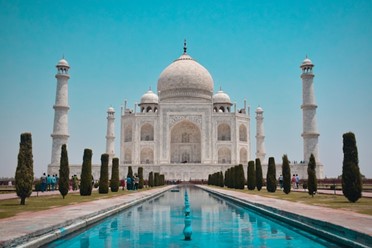Iconic Architectural Marvels Around the World: Lessons in Design and Engineering
Architecture is not merely about constructing buildings; it’s an art form that shapes landscapes, cultures, and societies. Throughout history, certain architectural marvels have transcended their physical presence to become symbols of innovation, cultural identity, and human achievement. David DeQuattro explores some of the world’s most iconic buildings, examining their design concepts, structural innovations, and profound cultural significance, offering valuable lessons in architecture and engineering.
Sydney Opera House, Australia
Designed by Danish architect Jørn Utzon, the Sydney Opera House is renowned for its distinctive sail-like shells that grace the Sydney Harbor. The design was inspired by nature and the surrounding seascape, reflecting Australia’s maritime culture.
Utzon’s revolutionary use of precast concrete shells allowed for the creation of the complex geometric forms, marking a breakthrough in engineering at the time.
A UNESCO World Heritage site, the Sydney Opera House is not only a performing arts center but also an enduring symbol of Australia’s creativity and artistic prowess on the global stage.
Burj Khalifa, Dubai, UAE
Designed by Adrian Smith of Skidmore, Owings & Merrill LLP, the Burj Khalifa stands as the world’s tallest building, reaching a staggering height of 828 meters. Its sleek, modern design draws inspiration from Islamic architecture, particularly the spiraling minarets of traditional mosques.
The tower’s Y-shaped floor plan and reinforced concrete core provide structural stability against wind forces, while its tapering silhouette reduces wind resistance at higher altitudes.
Symbolizing Dubai’s rapid urban development and ambition, the Burj Khalifa has become an iconic landmark and a testament to human ingenuity in engineering and construction.
Taj Mahal, Agra, India
Built in the 17th century by Mughal Emperor Shah Jahan as a mausoleum for his wife Mumtaz Mahal, the Taj Mahal is a masterpiece of Mughal architecture. Its symmetrical layout, intricate marble inlays, and lush gardens reflect Islamic, Persian, Ottoman Turkish, and Indian architectural styles.
The Taj Mahal’s white marble dome, minarets, and elaborate ornamentation showcase exceptional craftsmanship and engineering feats for its time, employing advanced techniques in marble carving and inlay work.
Recognized as one of the New Seven Wonders of the World, the Taj Mahal symbolizes eternal love and stands as a UNESCO World Heritage site, attracting millions of visitors annually.

Guggenheim Museum Bilbao, Spain
Designed by Frank Gehry, the Guggenheim Museum Bilbao is celebrated for its avant-garde design characterized by curvilinear forms and titanium cladding. The museum’s unconventional design challenged traditional architectural norms and revitalized the city’s industrial waterfront.
Gehry’s use of computer-aided design (CAD) software enabled the realization of complex, free-flowing shapes, demonstrating the integration of technology with artistic expression in architecture.
The Guggenheim Museum Bilbao has become a cultural phenomenon, transforming Bilbao into a global cultural destination and showcasing the power of architecture to catalyze urban regeneration and economic revitalization.
Lessons Learned from Iconic Architectural Marvels
Integration of Nature and Culture: Many iconic buildings draw inspiration from natural forms and cultural contexts, reflecting local identities and histories through architecture.
- Innovative Use of Materials and Technology: Advancements in materials science and technology have enabled architects to push the boundaries of design, creating structures that were once deemed impossible.
- Cultural Impact and Legacy: Iconic buildings transcend their functional purposes to become symbols of cultural pride, heritage, and innovation, leaving a lasting legacy for future generations.
Conclusion
Iconic architectural marvels serve as testaments to human creativity, innovation, and cultural expression. From the soaring heights of the Burj Khalifa to the timeless elegance of the Taj Mahal, each structure tells a story of architectural ingenuity and engineering prowess. By studying these landmarks, architects and engineers can glean valuable insights into design principles, structural innovations, and the profound impact of architecture on societies and landscapes worldwide.
As we continue to innovate and shape the built environment, these iconic buildings remind us of the transformative power of architecture to inspire, provoke thought, and leave a lasting imprint on the world around us. By embracing creativity, technological advancement, and cultural sensitivity, architects can continue to push boundaries and create enduring architectural masterpieces that define our architectural landscape for generations to come.

